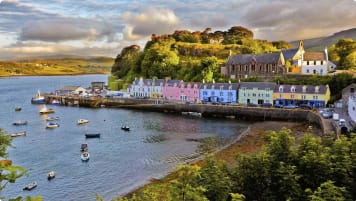Shipbuilding on the River Clyde
Glasgow's Clyde river has an important place in Scotland's history both as a port and shipbuilder. Read and learn about the contribution to the Industrial revolution and beyond that period in this article and others on Scotland. Odyssey Traveller is an Antipodean travel company serving World Travellers since 1983 with small group educational tours for senior couples and mature solo travellers.
24 Mar 22 · 9 mins read
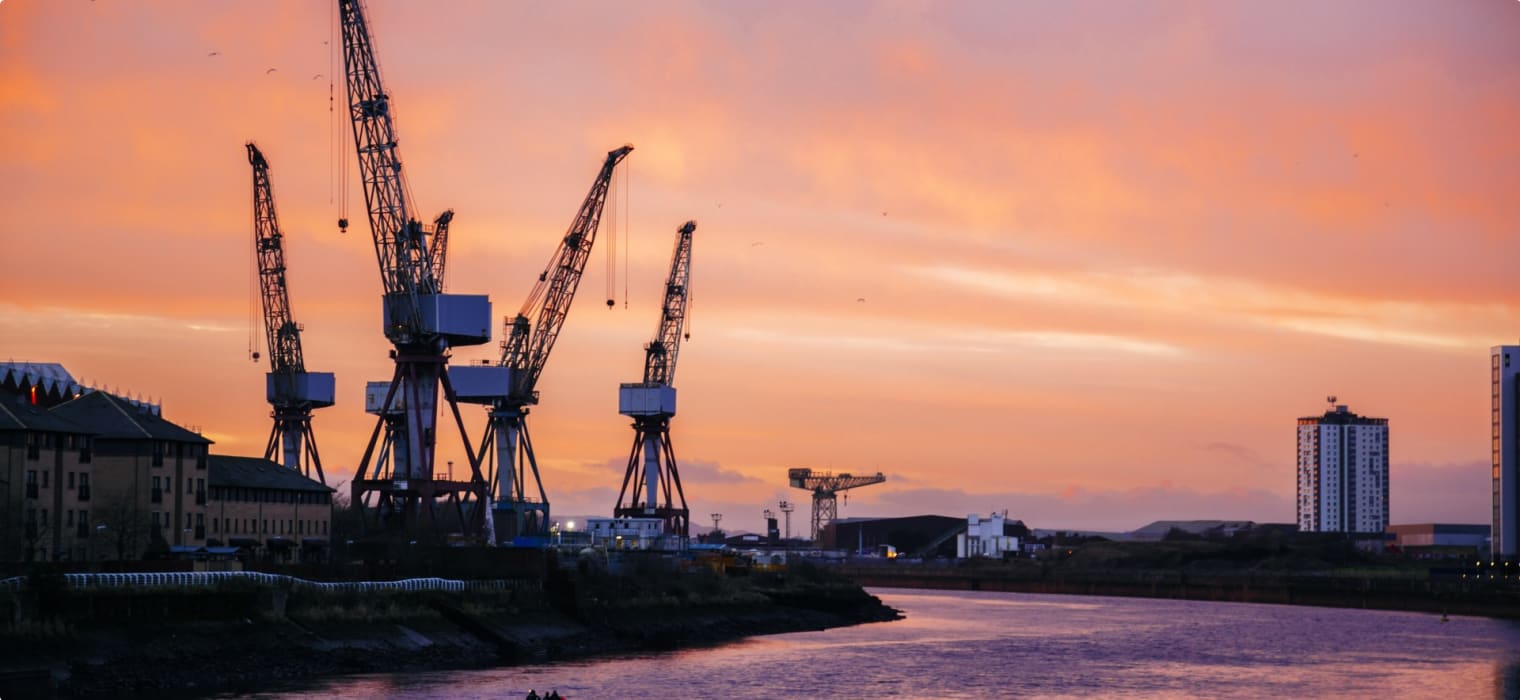
River Clyde Shipbuilding
By Marco Stojanovik
The River Clyde, one of Scotland’s major rivers, flows about 106 miles (170 km) from its source in the Lowther Hills in South Lanarkshire, west through the heart of Glasgow city, before discharging into the Atlantic at the Firth of Clyde. It is arguably Scotland’s most well-known river, famous worldwide for its past as the world’s pre-eminent shipbuilding centre.
At the turn of the 20th century, the river was widely regarded as the best location for shipbuilding in the British Empire. By this time, the industry here was constructing around a half of all ships worldwide, including some of the greatest ships ever built in Britain. Prestigious Atlantic liners, from the Lusitania to the Queen Mary and the Queen Elizabeth 2, as well as some of the greatest fighting ships of the 20th century, including the gigantic HMS Hood, and a vast array of lesser warships, cargo ships, and tankers were all built here – around 30,000 ships all up. The historian Andrew Marr describes the era as “heroic industrial times, when shipbuilding was central to Scotland’s sense of herself”.
But by the end of the 20th century, great ships were no longer still being built in Britain, with centres having moved to America, Japan, and across the continent of Europe. What had happened? Read on to find out in this articles about the rise and decline of the shipbuilding industry on the River Clyde, intended as background reading for Odyssey Traveller’s Scotland’s West Coast small group tour and Liverpool, Glasgow, Newcastle small group tour. Much of the information for this article has been sourced from Andrew Marr’s Elizabethans: How Modern Britain Was Forged.

Growth of the Shipbuilding Industry
Shipbuilding has occurred on the River Clyde since as far back as the 15th century. However, at first it was on only a very small scale, with a few yards building fishing boats and coastal trading vessels. Only with the loss of American suppliers during the war of independence in the 1770s did the shipyards begin to construct larger vessels and on a more industrial basis. Still though, by Scottish standards shipbuilding on the Clyde was still of relatively minor importance.
It wasn’t until the 19th century that the industry grew to be a substantial source of commerce for Glasgow and the surrounding area. This came off the back of the advent of the steam engine, especially the invention of a specialist steam engine for paddle steamers by Robert Napier – ‘the father of shipbuilding on the Clyde’. By the 1840s, at his yard at Govan, Napier was building record-breaking steamships and engines for commercial companies as well as for the Navy. And together with Samuel Cunard, the Canadian shipping magnate, he was making regular Atlantic steamship voyages popular and reliable.
His example spawned an industry on the upper reaches of the Clyde near Glasgow. Shipbuilding businesses like Denny’s Shipyard and John Brown’s Shipyard were among the first to follow to adopt steam power, before many more shipbuilding companies also established themselves on the river to be leaders in the field. These companies were highly successful, part of an economic boon for both Glasgow and Scotland in general as shipbuilding became one of the major industries on the Clyde in the 1850s. The Denny’s family business itself built over 1500 ships between 1844 and 1963, including the first steamship to cross the English Channel, the first turbine steamer, and the first diesel-electric paddle boat.
It was the Fairfield Shipyards though which arguably did the most to bring the Clyde River industry to its greatest worldwide prominence. It was founded in 1864 by William Elder, an apprentice to Robert Napier, who developed the compound steam engine. This engine was a breakthrough invention – bigger, faster, more reliable, and offering more efficient use of fuel – and it brought great success to the company. At its peak under William Pearce from 1888, the company employed 70,000 workers in 19 yards to meet a stream of contracts for both passenger and naval ships. By this point shipbuilding had become the single most dominant industry on the river.
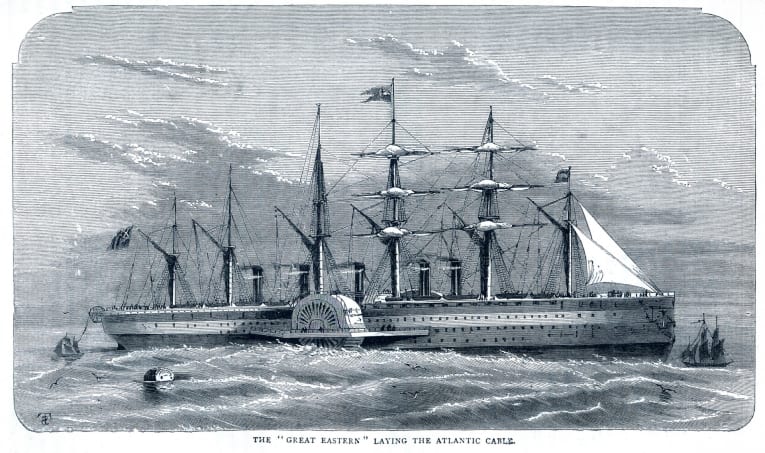
Another Napier employee from the early days was the young Glaswegian engineer George Thomson who, with his brother James, founded another of the great shipbuilding companies at Govan. J. & G. Thomson’s ships included many Cunard Atlantic carriers, and indeed a couple of the warships used by the Confederacy during the American Civil War. Forced to move from their Govan base, the brothers moved further down the river to Clydebank. They also brought their steel foundry business and engineering workshops here, effectively creating a new industrial town.
These companies’ success in turn attracted other ambitious entrepreneurs to join them. At the end of the nineteenth century a Sheffield steel maker called John Brown took over Thomsons. Brown had himself developed new steel processes, and the technology which literally underpinned the Victorian railway boom (the volute spring buffer). His steel business led him to make iron cladding for Victorian warships, and the company (which he had left by then) arrived on the Clyde in 1899.
By the early part of the twentieth century, John Brown & Co. was producing ironclad battleships for the Royal Navy and the flagships of the Cunard line. All the while it pursued relentless innovation in steel plate, turbine technology and the manufacturing process itself, going on to produce a stream of fine warships and aircraft carriers during the First and Second World Wars. Following the wars, it focused on manufacturing shipping, as well as special projects such as the Yacht Britannia in 1953 and the Queen Elizabeth II ocean liner in 1967.
By this point, however, the industry had long passed its peak. This had come in the years just before the First World War, with an estimated over 370 ships alone were completed in the year 1913 alone. At this point, there were over 200 separate shipyards constructing cruise liners, steamers, yachts, submarines, and warships (including some of the leading suppliers of the Royal Navy).
Decline of Shipbuilding in the Post-war Era
The decline of the Clyde shipping industry set in swiftly following the Second World War. German air raids during the war had targeted Glasgow on the Clyde as a major industrial centre, heavily damaging its buildings. This was a hefty blow for many companies to recover from. The companies that did survive following the war were able to despite a sharp reduction in warship orders by shifting their focus to merchant shipping.
However, by the end of the 1950s, they found themselves struggling to compete. Emerging shipbuilding superpowers in Asian countries had developed well-capitalised and highly productive industries that were outdoing the British.
Marr argues that in theory that Britain should have been able to compete: “Her workforce was as highly skilled as ever. Its companies had long traditions of supplying both the Royal Navy (a picky and difficult customer) and the fast-changing demands of merchant fleets. Yet by then something fundamental had gone wrong. British shipbuilding had stopped innovating.”
The great old companies had declined to learn the lessons of prefabrication and more organized factory-based systems. Managers had refused to invest in modern machinery and somehow lost curiosity, ignoring growing new markets. They had allowed the new oil supertankers to be forged, riveted, and launched in Japan. And they had not sent expert delegations (or indeed industrial spies) to the new yards in Scandinavia and Germany which were already stealing their business.
Several Clyde shipyards booked a series of loss-making contracts in the hope of enduring the crisis. However, they remained unprofitable for too long, and by the mid-1960s several were on the verge of collapse.
In response to the crisis, the UK government created the Upper Clyde Shipbuilders (UCS) consortium in 1968. This consisted of about 8,500 workers in five yards – Fairfield’s and Stephens on the south bank, Connel’s and Yarrow’s on the north bank, and John Brown’s at Clydebank.
The Upper Clyde Shipbuilders Work-in
UCS soon faltered, going into receivership in 1971. At the time, the Ted Heath-led Tory government had a policy of no support for the shipbuilding industry, amongst other industries. So, they refused USC’s request for a modest loan of £6 million to help sustain it. This was despite the fact that earlier that year the government had nationalised Rolls-Royce aero engines due to vital strategic interests.
This upset the USC workers. With 6,500 USC directly at risk, along with at least another 15,000 associated jobs, the workers responded with one of the most significant episodes in industrial history. Union shop stewards representing workers from the five shipbuilding yards in the merged group seized control of the entire operation – the gates, the management offices, the half-built ships and the engineering workshops, the lot – and declared they would continue production of ships. It would be a ‘work-in’.
On July 30, Jimmy Reid, spokesman and one of the leaders in the Upper Clyde Shipbuilders work-in, addressed the workers with his now famous words: “We are not going to strike. We are not even going to have a sit-in strike. Nobody and nothing will come in and nothing will go out without our permission. And there will be no hooliganism. There will be no vandalism. There will be no bevvying [drinking alcohol] – because the world is watching us and it is our responsibility to conduct ourselves with responsibility and with dignity and with maturity.”
And so they did. Over seven months, the workforce of the five yards turned up every day and completed their usual tasks, so that half-built ships were finished and the finished vessels were released to their new owners. So much for all the higher-paid managers: the workers were doing it all for themselves. Hundreds of thousands of Scottish workers meanwhile showed solidarity by striking and holding mass demonstrations. These efforts were eventually a success, with the government by February 1972 finally relenting and agreeing to hand over £35 million to the yards at Govan and Scotstoun.
The River Clyde Today
Despite that bailout, with the managers back, UCS did not prosper. Closures continued up and down the Clyde, and by 1977 most of Clyde’s shipyards had been nationalised and grouped with other major British shipyards, such as the firm British Shipyards. There were further mergers and many more mass redundancies under the Thatcher governments. Privatizations and break-ups followed.
Today two major shipyards on the Upper Clyde– the former Yarrow yard at Scotstoun, and Fairfield at Govan – remain in operation. Both are owned by BAE Systems Surface Ships, a naval contractor specialising in the design and construction of technologically advanced warships for the Royal Navy and other navies around the world.
Looking back up the Clyde today, there’s little sign now of the sprawling industrial region that used to supply so much of the world’s shipping. Near the centre of Glasgow, most of the space where the work-ins took place is semi-derelict or redeveloped for luxury flats, hotels, and a conference centre. The grand Finnieston Crane, another relic from the 1930s, stands like a lonely monument and is photographed by tourists.
Nevertheless, new industries involved in finance, tourism, digital media, and shipping have all taken root in recent years to successfully revive commerce along the Clyde for modern times. While the tradition of shipbuilding is sure to endure, the region is now once again prospering in the new direction in which it is heading.
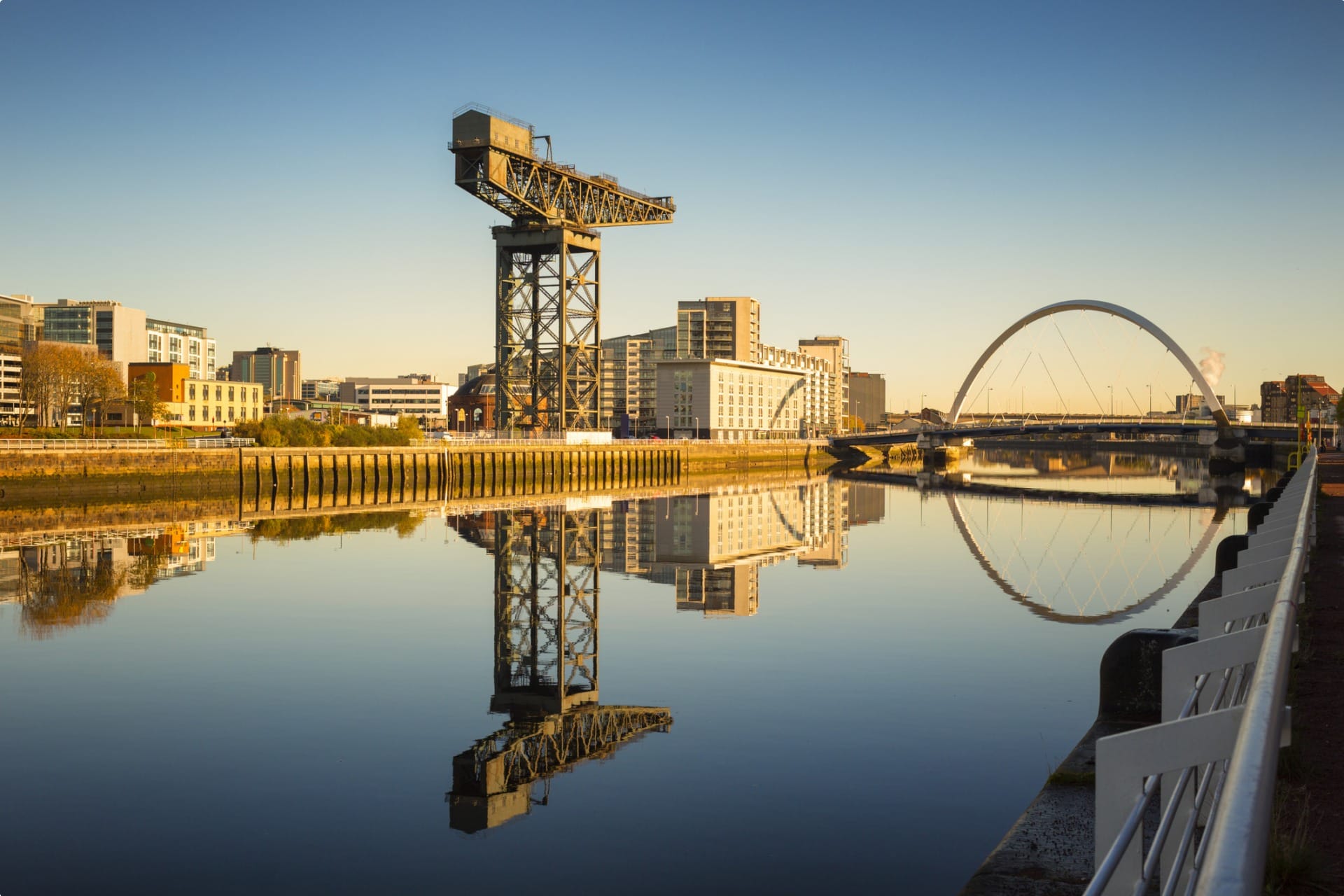
Tour of the River Clyde
You can visit the River Clyde in Glasgow on several of Odyssey Traveller’s tours in Scotland.
Our 26-day Scotland’s West Coast small group tour is for the senior couple or mature solo traveller who wants to really explore the beauty of Scotland’s magnificent landscape, particularly in the Highlands and Islands. Our fully escorted tour takes us from the historic Orkney Islands in the north, all the way down to the Mull of Galloway in the far south of the country. On the way we visit the Outer Hebrides, Skye and the Island of Mull. We drive through atmospheric Glencoe, travel around mysterious Loch Ness, and take the famous rail journey between Fort Willian and Mallaig.
Our 22-day Liverpool, Glasgow, Newcastle small group tour meanwhile explores three great cities of Great Britain in three weeks: Liverpool, Newcastle, and Glasgow. If you are a mature-aged or senior traveller with a thirst for knowledge and an open inquisitive mind, we would love to have you on board for our next departure of our private guided tours. This small group educational program typically spends one week in self-catering apartments in the city centre of these locations, where we will be accompanied by an Odyssey Program Leader and local tour guides to get to our destinations.
Odyssey Traveller has been serving global travellers since 1983 with educational tours of the history, culture, and architecture of our destinations designed for mature and senior travellers. We specialise in offering small group tours partnering with a local tour guide at each destination to provide a relaxed and comfortable pace and atmosphere that sets us apart from larger tour groups. Tours consist of small groups of between 6 and 12 people and are cost inclusive of all entrances, tipping and majority of meals. For more information, click here, and head to this page to make a booking.
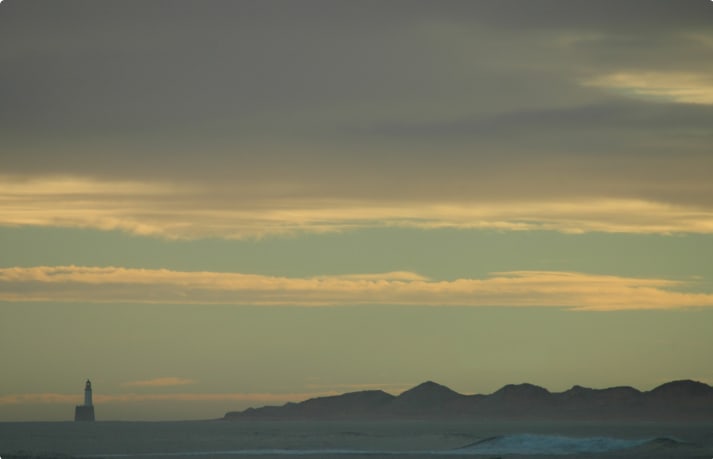
Articles about Scotland published by Odyssey Traveller
The following list of articles published by odyssey Traveller for mature aged and senior travellers to maximise their knowledge and enjoyment of Scotland when visiting:
- Birth of Scotland
- Questions about Scotland
- Peat & Scotland
- Shetland Islands Discovered
- Questions about the Outer Hebrides
- Visiting Scotland
- Scotland & Scotch Whisky
- Visiting Edinburgh places to consider visiting
- Country Spotlight; Scotland
- Nelson Mandela Place; a Glasgow story
- Glasgow’s Architectural heritage
- Stone circles
- Bell Rock Lighthouse
For all the articles Odyssey Traveller has published for mature aged and senior travellers, click through on this link.
External articles to assist you on your visit to Scotland
Related Tours
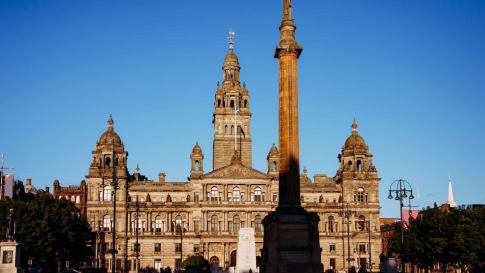
From A$13,915 AUD
View Tour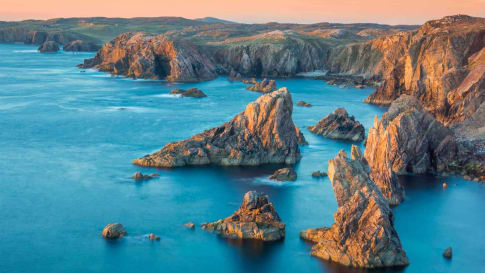
26 days
Sep, Apr, May, AugScotland's West Coast small group tour
Visiting Scotland
Explore the West of Scotland, join the gulf stream and visit and spend time with a small group educational tour for senior couples and mature solo travellers visiting with time to explore in depth, Skara Brae, Mull, Iona, Oban and Glasgow and the communities of the Atlantic.
From A$21,935 AUD
View Tour
5 days
Jun, JulEdinburgh City Tour
Visiting Scotland
A guided tour of the capital of Scotland, Edinburgh is a day tour collection with a tour leader and local guides. The old town of Edinburgh including the Royal mile and New town of Edinburgh are a UNSECO world heritage site and are included in our itineraries as well the Palace of Holyroodhouse.
From A$4,795 AUD
View Tour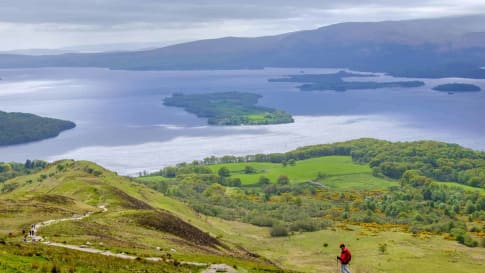
13 days
Jun, Aug, MayScotland's Great Trails Walking Tour
Visiting Scotland
An escorted walking tour of Scotland. This trip is mainly in the Scottish Highlands. Your tour leader guides you to Stirling Castle, Loch Lomond and Craignorms National park with experienced local guides. The tour for mature couples and solo travellers finishes in Edinburgh with time to visit Edinburgh Castle and the Royal mile a UNESCO World heritage site.
From A$11,560 AUD
View Tour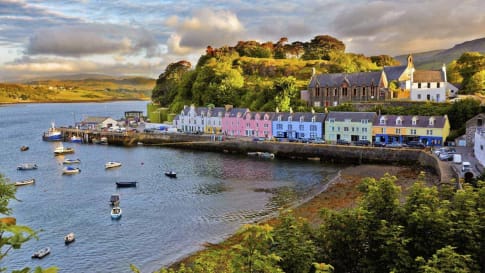
20 days
May, Jul, Aug, SepScottish Islands and Shetland small group tours for seniors
Visiting Scotland
An escorted small group tour for couples and solo travellers of the Scottish isles including the isle of Skye draws on local guides to share their knowledge of the destinations in this unique part of Scotland. UNESCO world heritage site are visited as breathtaking scenery and authentic experiences are shared in a group of like minded people on this guided tour of remote Scotland.
From A$17,525 AUD
View Tour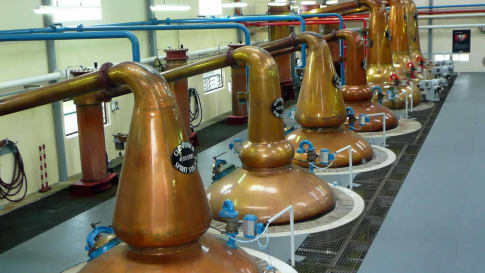
19 days
JulWhisky and Other Scottish Wonders
Visiting Scotland
A guided small group tour of Scotland is a day tour collection that includes Edinburgh, the royal mile, Edinburgh castle, and the old town a UNESCO World heritage site Experience and learn about, Kellie castle, St Andrews, Skye, Balmoral castle, Loch Lomond and Loch Ness as well touring the Scottish highlands to finish in Glasgow.
From A$18,395 AUD
View Tour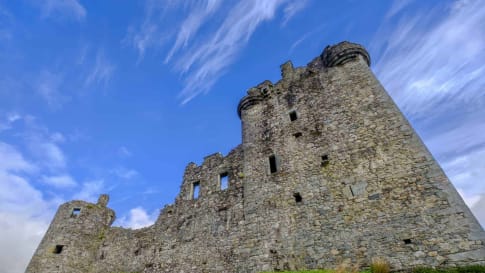
22 days
Jul, Sep, Jun, AugScotland small group tour | Tracing 5,000 years of history
Visiting Scotland
This guided tour of Scotland with a tour leader and local guides includes the isle of Skye, Orkney islands, the Scottish highlands with breathtaking scenery. Edinburgh including the royal mile, Palace of Holyroodhouse, Fort William, Urquhart castle, Stirling castle, loch lomond, Hadrians wall and New Lanark also a UNESCO World heritage site.
From A$15,995 AUD
View TourArticles
Related Articles
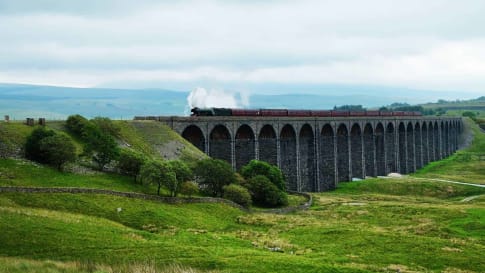
15 books on Britain's Industrial Revolution
Fifteen books on Britain’s Industrial revolution This reading list on Britain’s Industrial revolution complements Odyssey Travellers escorted small group tour that traces via the canal and railway network, the evolution of this monumental change in…
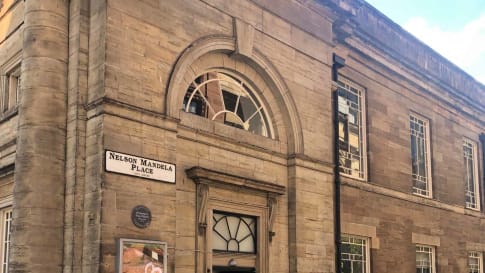
Glasgow; Nelson Mandela Place
How Glasgow stood with the South African Leader Against Apartheid as part of learning about Scotland before joining a small group tour for senior couples and mature solo travellers.
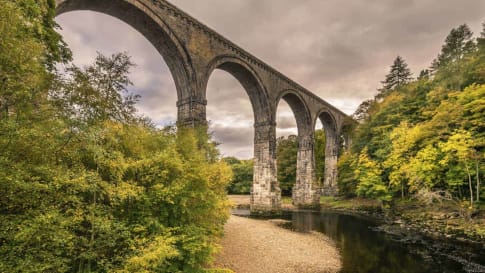
Industrial Revolution. Britain's contribution to the world
Britain and the industrial revolution. A progressive period that spanned Queen Victoria's period. Small group package tours for mature and senior travellers explore this fascinating period of history across England and Scotland and key cities such as Manchester, Liverpool, Newcastle and Glasgow.

Scotland & Scotch Whisky
Article for senior and mature solo and couples taking a small group tour of Scotland or the isles of Scotland including Iona, Orkney, inner and outer Hebrides to learn about the ancient history including standing stones to the industrial revolution.

Stevenson Family Lighthouse Engineers
Article about the generations of Stevenson's building lighthouses along the islands of Scotland and the Scottish coast.An Antipodean travel company serving World Travellers since 1983 with small group educational tours for senior couples and mature solo travellers.

Travellers exploring Glasgow's Architectural Heritage
Article about Glasgow Architectural heritage, led by the Industrial revolution, in Victorian Britain, wealth flowed to Scotland to Glasgow and Edinburgh. See and learn on a small group tour for senior couples or mature solo travelers.

Understanding British Churches: The Definitive Guide for Travellers
British Churches Through the Years “How old is this church?” asks Mary-Ann Ochota in a chapter of her book, Hidden Histories: A Spotter’s Guide to the British Landscape (Francis Lincoln, 2016, p. 250). In this article, we…

Visiting Britain's World Heritage Sites
UNESCO World Heritage sites are well represented in Britain, beyond Stonehenge. This collection of Small group tours across England, Ireland, Wales and Scotland incorporates visits to these current and future sites in its programs for mature and senior travellers of up to 12 people, a mix of couples and solo travellers. Often on Walking tours and History in depth programs.
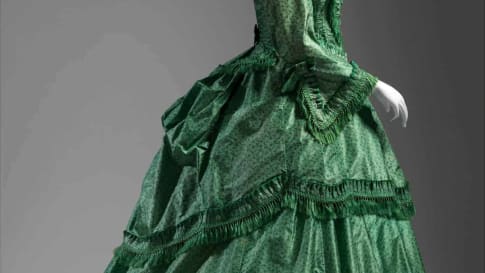
Victorian Women's Fashion: The Definitive Guide for Travellers
Article about Fashion including fabric and colour from Queen Victoria's. A period of personalities and progress change via the industrial revolution is examined for the senior couple and solo traveller seeking to learn more on a small group tour.
